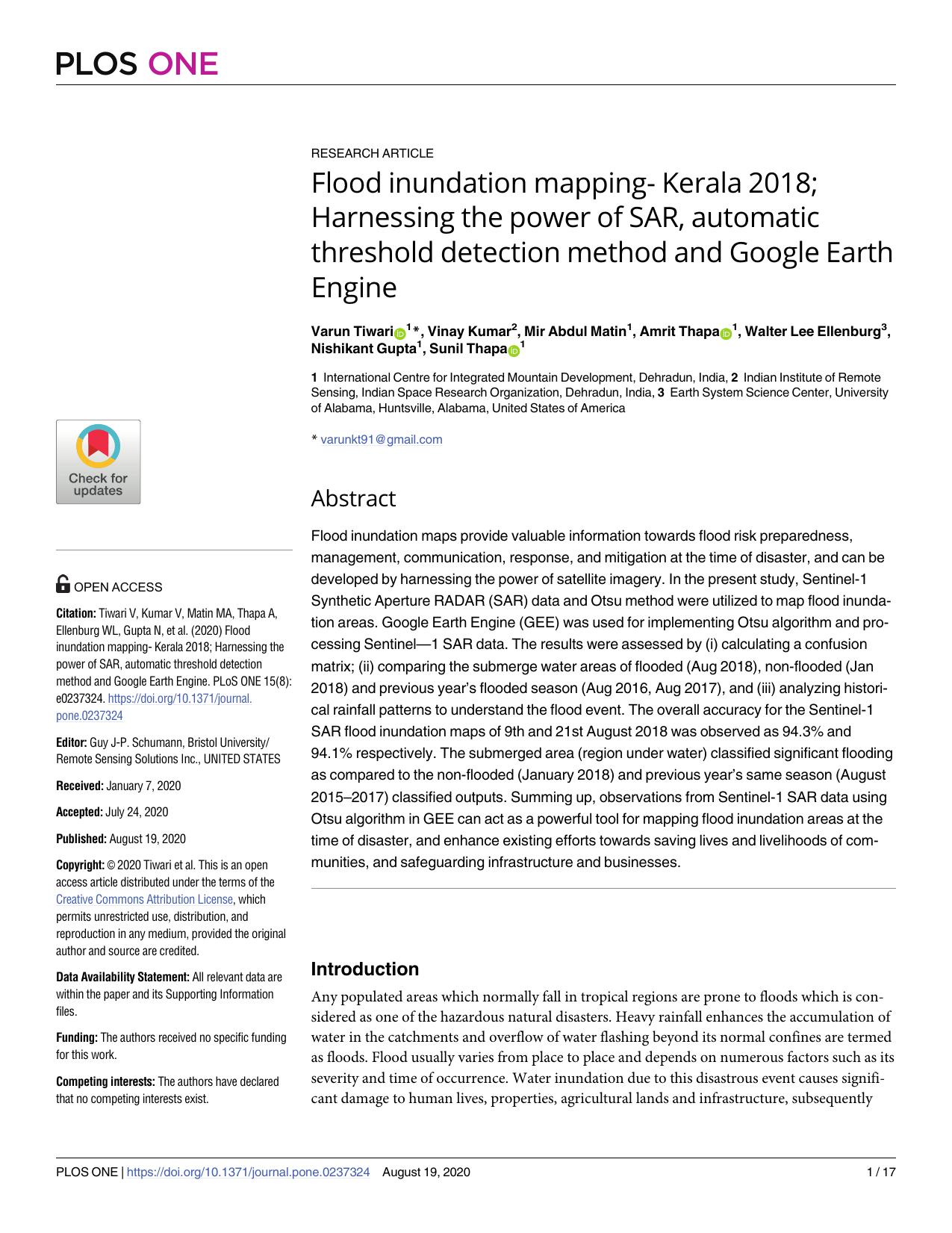
Flood inundation maps provide valuable information towards flood risk preparedness, management, communication, response, and mitigation at the time of disaster, and can be developed by harnessing the power of satellite imagery. In the present study, Sentinel-1 Synthetic Aperture RADAR (SAR) data and Otsu method were utilized to map flood inundation areas. Google Earth Engine (GEE) was used for implementing Otsu algorithm and processing Sentinel—1 SAR data. The results were assessed by (i) calculating a confusion matrix; (ii) comparing the submerge water areas of flooded (Aug 2018), non-flooded (Jan 2018) and previous year’s flooded season (Aug 2016, Aug 2017), and (iii) analyzing historical rainfall patterns to understand the flood event. The overall accuracy for the Sentinel-1 SAR flood inundation maps of 9th and 21st August 2018 was observed as 94.3% and 94.1% respectively. The submerged area (region under water) classified significant flooding as compared to the non-flooded (January 2018) and previous year’s same season (August 2015–2017) classified outputs. Summing up, observations from Sentinel-1 SAR data using Otsu algorithm in GEE can act as a powerful tool for mapping flood inundation areas at the time of disaster, and enhance existing efforts towards saving lives and livelihoods of communities, and safeguarding infrastructure and businesses.